
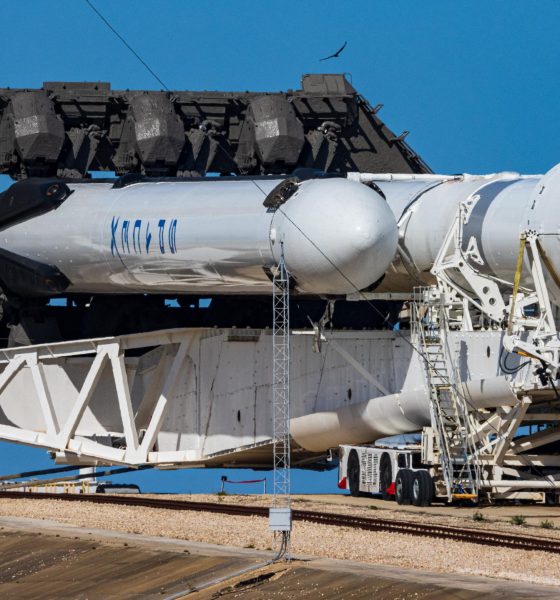
News
SpaceX gears up for busy year of Falcon Heavy launches
SpaceX is targeting no earlier than January 12th for the fifth launch of Falcon Heavy, the largest and most powerful commercial rocket in the world.
As was the case for the rocket’s third and fourth launches, the main customer behind its fifth launch is the US military. Deemed USSF-67, the mission is also expected to be very similar to Falcon Heavy’s most recent launch, USSF-44. That mission saw the massive SpaceX rocket complete its first direct launch to a geosynchronous orbit ~36,000 kilometers (~22,250 mi) above Earth’s surface, where it deployed a pair of spacecraft carrying several rideshare payloads and satellites. Save for the possibility that the US Space Force included secret payloads on USSF-44, the mission appeared to be more of a rocket test and loose collection of experiments than a major military launch.
USSF-67 will likely be similar. According to the US Space Systems Command (SSC), USSF-67 – like USSF-44 – will carry an Aerojet Rocketdyne Long Duration Propulsive EELV (LPDE) spacecraft as a main payload. Aboard LPDE-3A, which is essentially a satellite without a payload, various stakeholders will install an unknown number of experiments, instruments, and smaller satellites that can be activated or deployed once in orbit. The SSC says [PDF] that “LDPE provides critical data to inform future Space Force programs” and that “the unique experiments and prototype payloads hosted on LDPE-3A [will] advance warfighting capabilities in the areas of on-orbit threat assessment, space hazard detection, and space domain awareness.”
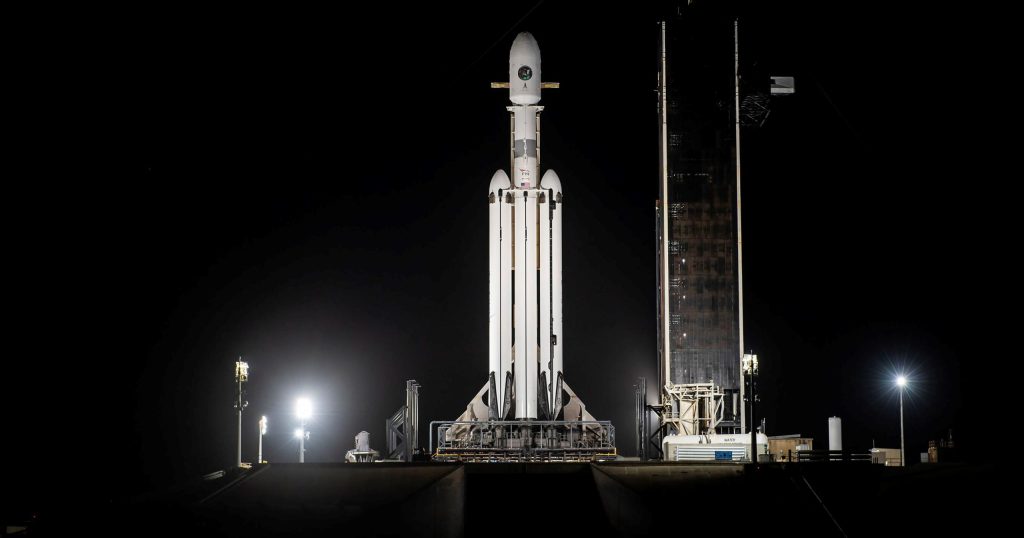
The update that's rolling out to the fleet makes full use of the front and rear steering travel to minimize turning circle. In this case a reduction of 1.6 feet just over the air— Wes (@wmorrill3) April 16, 2024
The mission will be Falcon Heavy’s second launch since June 2019 and is scheduled to lift off 72 days after the rocket’s USSF-44 launch, which finally ended its unplanned 1225-day hiatus. The schedule is reminiscent of 2019, when SpaceX launched its second and third Falcon Heavy rockets 75 days apart. The second of those two missions (STP-2) was primarily a test flight for the US Air Force (now the Space Force) meant to both push Falcon Heavy to its limits with a complex trajectory and demonstrate Falcon booster reusability. To accomplish the latter goal, STP-2 reused two of the three Falcon Heavy boosters that supported the rocket’s Arabsat 6A communications satellite launch two months prior. USSF-67 will also reuse both of USSF-44’s Falcon Heavy side boosters.
STP-2 was ultimately a near-flawless success, but endless payload delays left Falcon Heavy with nothing to launch for more than three years. Following its return to flight in late 2022, Falcon Heavy may finally be able to properly stretch its wings in 2023. Of course, this isn’t the first time that’s appeared to be the case. In February 2021, there were many signs that SpaceX was preparing to launch Falcon Heavy in mid-2021. And in late 2021, there were strong signs that SpaceX customers were on track for up to five Falcon Heavy launches in 2022.
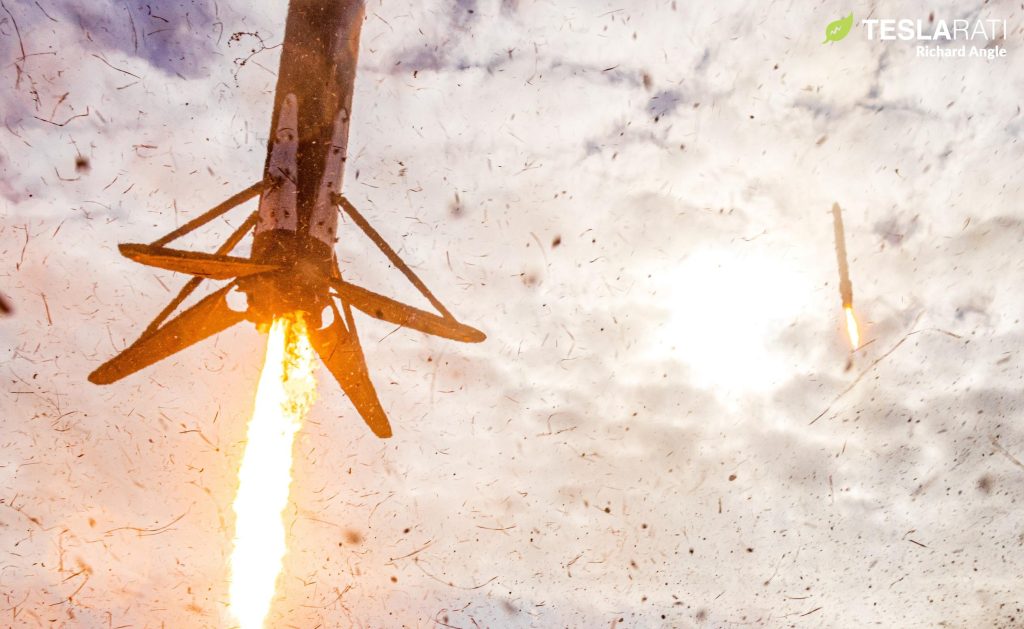
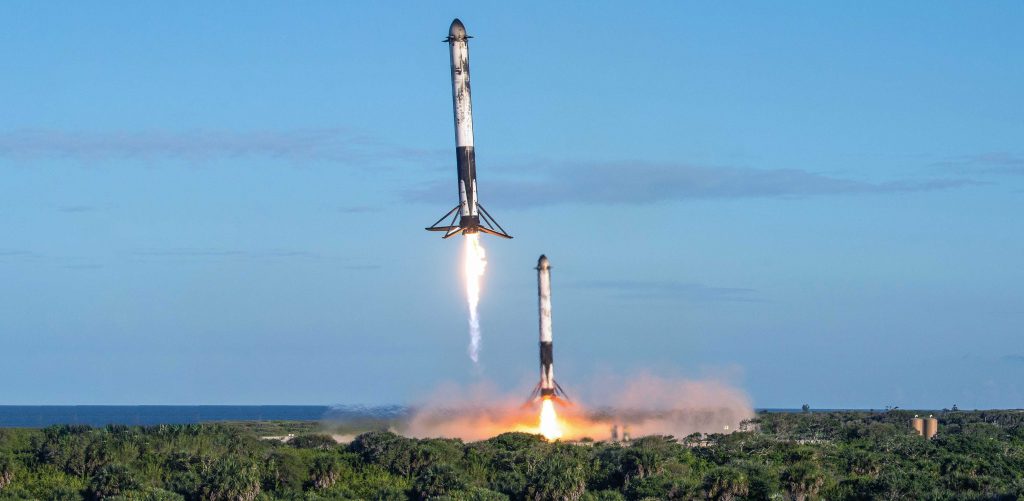
Now, for the second time, there are five Falcon Heavy rockets tentatively scheduled to launch this year (2023). But the situation is not identical. Numerous long-delayed payloads like the first ViaSat-3 and Jupiter-3 satellites and the US military’s mysterious USSF-67 and USSF-52 spacecraft are finally on the cusp of crossing their respective finish lines. NASA’s Psyche asteroid explorer spacecraft has also survived a continuation review after running into major software issues that precluded a 2022 launch attempt. And Falcon Heavy finally launched USSF-44 – a chronically delayed mission – in November 2022.
Additionally, four of those five Falcon Heavy launches are tentatively scheduled in the first half of 2023, leaving plenty of margin for major delays in the second half of the year. But until ViaSat-3, Jupiter-3, and USSF-52 actually arrive in Florida and until NASA explicitly confirms that Psyche’s technical issues are resolved, any launch targets should be treated with extreme skepticism.
USSF-67 is thankfully much less uncertain. Like Arabsat 6A and STP-2, USSF-67 will reuse both of the Falcon Heavy side boosters recovered after USSF-44. Mirroring USSF-44, SpaceX will also intentionally expend Falcon Heavy’s new center booster to launch USSF-67 directly to geosynchronous orbit. Most importantly, LPDE-3A – the only confirmed USSF-67 payload – arrived in Florida in November 2022. USSF-67 prelaunch operations are currently running a day or two behind schedule relative to USSF-44, but all evidence indicates that the mission is on track to launch sometime in January 2023.

News
Tesla aims to combat common Full Self-Driving problem with new patent
Tesla writes in the patent that its autonomous and semi-autonomous vehicles are heavily reliant on camera systems to navigate and interact with their environment.
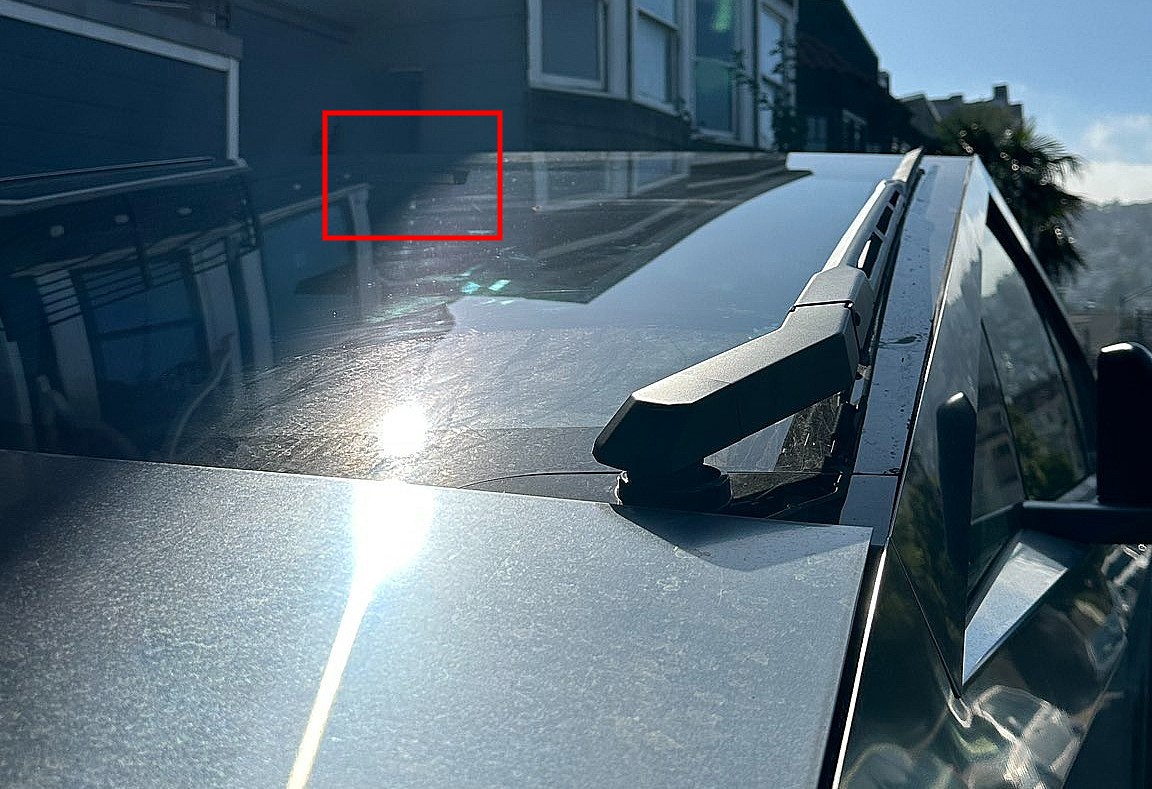
Tesla is aiming to combat a common Full Self-Driving problem with a new patent.
One issue with Tesla’s vision-based approach is that sunlight glare can become a troublesome element of everyday travel. Full Self-Driving is certainly an amazing technology, but there are still things Tesla is aiming to figure out with its development.
Unfortunately, it is extremely difficult to get around this issue, and even humans need ways to combat it when they’re driving, as we commonly use sunglasses or sun visors to give us better visibility.
Cameras obviously do not have these ways to fight sunglare, but a new patent Tesla recently had published aims to fight this through a “glare shield.”
Tesla writes in the patent that its autonomous and semi-autonomous vehicles are heavily reliant on camera systems to navigate and interact with their environment.

The ability to see surroundings is crucial for accurate performance, and glare is one element of interference that has yet to be confronted.
Tesla described the patent, which will utilize “a textured surface composed of an array of micro-cones, or cone-shaped formations, which serve to scatter incident light in various directions, thereby reducing glare and improving camera vision.”

The patent was first spotted by Not a Tesla App.
The design of the micro-cones is the first element of the puzzle to fight the excess glare. The patent says they are “optimized in size, angle, and orientation to minimize Total Hemispherical Reflectance (THR) and reflection penalty, enhancing the camera’s ability to accurately interpret visual data.”
Additionally, there is an electromechanical system for dynamic orientation adjustment, which will allow the micro-cones to move based on the angle of external light sources.
This is not the only thing Tesla is mulling to resolve issues with sunlight glare, as it has also worked on two other ways to combat the problem. One thing the company has discussed is a direct photon count.
CEO Elon Musk said during the Q2 Earnings Call:
“We use an approach which is direct photon count. When you see a processed image, so the image that goes from the sort of photon counter — the silicon photon counter — that then goes through a digital signal processor or image signal processor, that’s normally what happens. And then the image that you see looks all washed out, because if you point the camera at the sun, the post-processing of the photon counting washes things out.”
Future Hardware iterations, like Hardware 5 and Hardware 6, could also integrate better solutions for the sunglare issue, such as neutral density filters or heated lenses, aiming to solve glare more effectively.
Elon Musk
Delaware Supreme Court reinstates Elon Musk’s 2018 Tesla CEO pay package
The unanimous decision criticized the prior total rescission as “improper and inequitable,” arguing that it left Musk uncompensated for six years of transformative leadership at Tesla.

The Delaware Supreme Court has overturned a lower court ruling, reinstating Elon Musk’s 2018 compensation package originally valued at $56 billion but now worth approximately $139 billion due to Tesla’s soaring stock price.
The unanimous decision criticized the prior total rescission as “improper and inequitable,” arguing that it left Musk uncompensated for six years of transformative leadership at Tesla. Musk quickly celebrated the outcome on X, stating that he felt “vindicated.” He also shared his gratitude to TSLA shareholders.
Delaware Supreme Court makes a decision
In a 49-page ruling Friday, the Delaware Supreme Court reversed Chancellor Kathaleen McCormick’s 2024 decision that voided the 2018 package over alleged board conflicts and inadequate shareholder disclosures. The high court acknowledged varying views on liability but agreed rescission was excessive, stating it “leaves Musk uncompensated for his time and efforts over a period of six years.”
The 2018 plan granted Musk options on about 304 million shares upon hitting aggressive milestones, all of which were achieved ahead of time. Shareholders overwhelmingly approved it initially in 2018 and ratified it once again in 2024 after the Delaware lower court struck it down. The case against Musk’s 2018 pay package was filed by plaintiff Richard Tornetta, who held just nine shares when the compensation plan was approved.
A hard-fought victory
As noted in a Reuters report, Tesla’s win avoids a potential $26 billion earnings hit from replacing the award at current prices. Tesla, now Texas-incorporated, had hedged with interim plans, including a November 2025 shareholder-approved package potentially worth $878 billion tied to Robotaxi and Optimus goals and other extremely aggressive operational milestones.
The saga surrounding Elon Musk’s 2018 pay package ultimately damaged Delaware’s corporate appeal, prompting a number of high-profile firms, such as Dropbox, Roblox, Trade Desk, and Coinbase, to follow Tesla’s exodus out of the state. What added more fuel to the issue was the fact that Tornetta’s legal team, following the lower court’s 2024 decision, demanded a fee request of more than $5.1 billion worth of TSLA stock, which was equal to an hourly rate of over $200,000.
Delaware Supreme Court Elon Musk 2018 Pay Package by Simon Alvarez
News
Tesla Cybercab tests are going on overdrive with production-ready units
Tesla is ramping its real-world tests of the Cybercab, with multiple sightings of the vehicle being reported across social media this week.

Tesla is ramping its real-world tests of the Cybercab, with multiple sightings of the autonomous two-seater being reported across social media this week. Based on videos of the vehicle that have been shared online, it appears that Cybercab tests are underway across multiple states.
Recent Cybercab sightings
Reports of Cybercab tests have ramped this week, with a vehicle that looked like a production-ready prototype being spotted at Apple’s Visitor Center in California. The vehicle in this sighting was interesting as it was equipped with a steering wheel. The vehicle also featured some changes to the design of its brake lights.
The Cybercab was also filmed testing at the Fremont factory’s test track, which also seemed to involve a vehicle that looked production-ready. This also seemed to be the case for a Cybercab that was spotted in Austin, Texas, which happened to be undergoing real-world tests. Overall, these sightings suggest that Cybercab testing is fully underway, and the vehicle is really moving towards production.
Production design all but finalized?
Recently, a near-production-ready Cybercab was showcased at Tesla’s Santana Row showroom in San Jose. The vehicle was equipped with frameless windows, dual windshield wipers, powered butterfly door struts, an extended front splitter, an updated lightbar, new wheel covers, and a license plate bracket. Interior updates include redesigned dash/door panels, refined seats with center cupholders, updated carpet, and what appeared to be improved legroom.
There seems to be a pretty good chance that the Cybercab’s design has been all but finalized, at least considering Elon Musk’s comments at the 2025 Annual Shareholder Meeting. During the event, Musk confirmed that the vehicle will enter production around April 2026, and its production targets will be quite ambitious.








